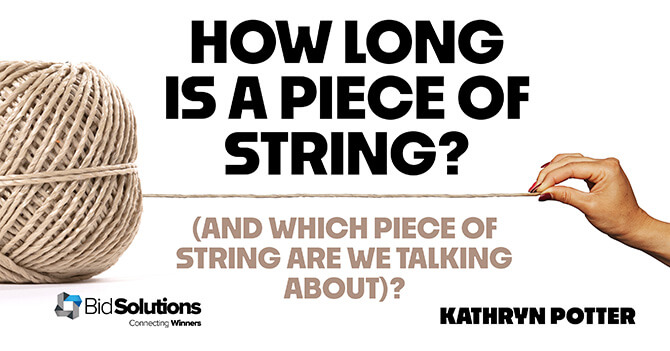
This is an interesting question as a contractor/freelancer in the world of bids and proposals. How do we measure performance? What are our metrics? As contractors we don’t have a list of projects we can always say we have been involved in since the beginning of a bid, or even that we know the outcome once we’ve done our bit and moved to the next contract. It’s tough when we have to prove success rates or provide performance metrics.
It made me question how we measure success in bids in general. Win rates? Scoring? Retention? Places on a framework? Quality scoring? Amount of time saved through reusable content?
So often win rates and successes are held up as the primary metric for performance. As we all know though, win rates can be horribly skewed and not indicative of actual success if there is a poor bidding strategy in place. What about all the times we lose on price, yet have impeccable quality scores? Or when it’s about bidding everything ‘just in case’? A team with a 25% win rate may actually be as successful as a team with an 80% win rate – just bidding on more items that are poorly qualified. And is qualification the responsibility of the bid team or the sales team? How many salespeople decide something is a must-bid and get it through Bid/No Bid by fudging information?
The longer I work in proposal management and bid writing the more I think we need to develop a better set of metrics. One that takes into account the complexity of what we do, measuring how quickly (against set timelines) things like Bid/No Bid results are reached, how quickly we can get responses from contributors and whether we meet the project timelines we set ourselves for reviews. All this without working through the night or spending weekends working when we should be spending time with our families or recharging.
Why not factor into our metrics the cost of a bid against the profit we expect to make if we’re successful? Or how many hours it takes to produce high-quality compelling responses and work out how we can improve performance against this? Or look at how many of the responses we wrote made use of reusable content?
Let’s create a world where:
- Organisations define their Bid/No Bid criteria better and actually implement them
- Sales/Business Development and Bid/Proposal teams work closer together to understand, share and develop capture plans
- Time management and effort are understood and used in planning responses
- Bid and proposal teams are engaged from the beginning of a pursuit
- We really understand and evaluate WHY we want places on frameworks and whether they’re actually used
- Retention bids/proposals and what they entail are better understood and there is more communication across the organisation (from way before a contract is due to renew) and we measure how much work we retain (and if we lose it, understand why)
- There are rewards for being efficient and implementing efficiencies
- Senior Management and SMEs are rated on their commitment to contributing what they said they would
- We measure how many weekends/late nights are NOT worked
If we can capture these sorts of metrics and evaluate whether we’re improving against them I think we will all be more successful and perform at higher levels.
This article was written by Kathryn Potter.
Kathryn’s experience in bid writing covers sectors as varied as IT outsourcing to financial services, security services to reprographics and construction and rail. She sees content as the cornerstone of proposal development and understands that no matter what, it needs to be relevant and up-to-date

